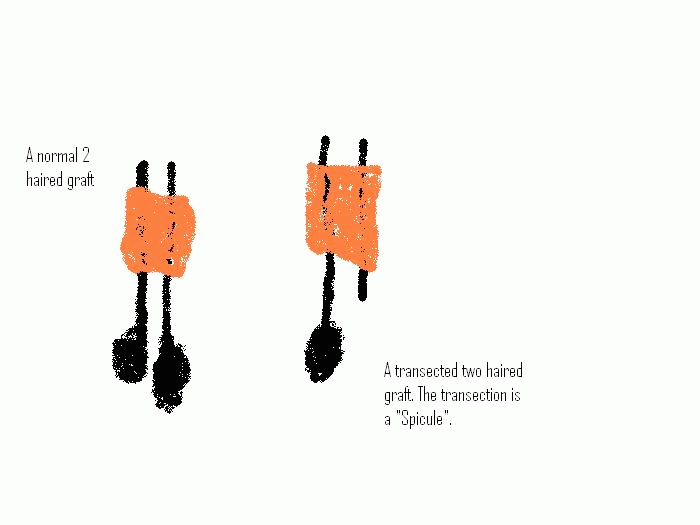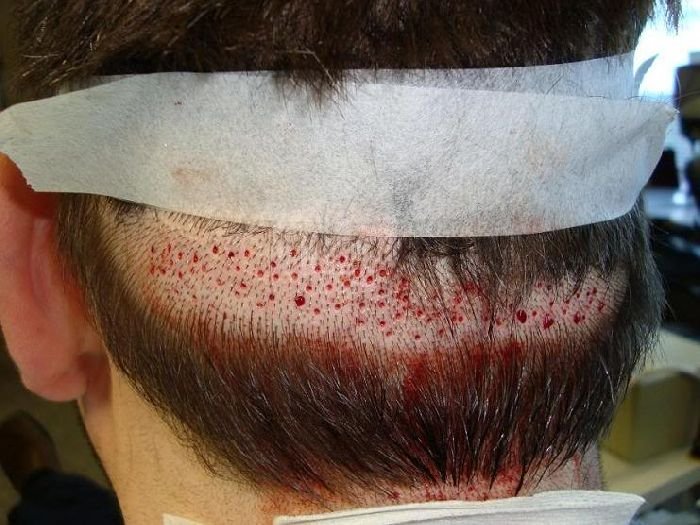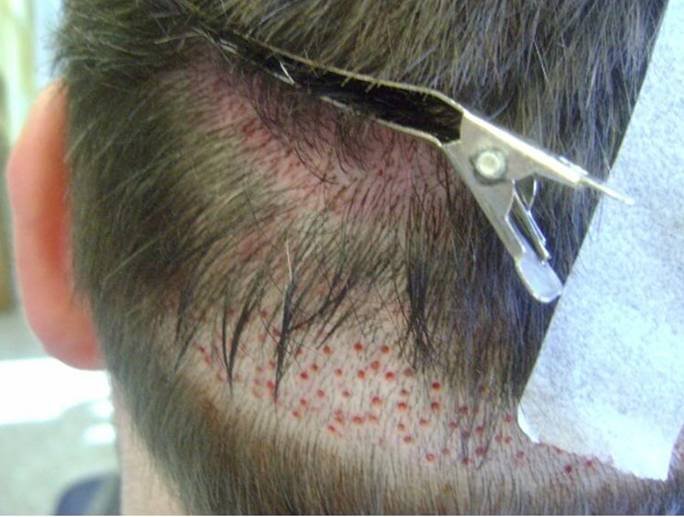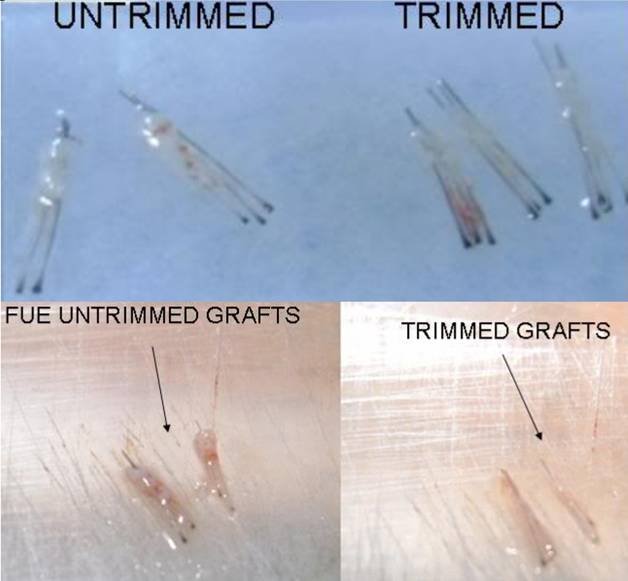» You bring up an important point Franklin. The handling of the grafts are by
» far one of the most important factors that can make or break an FUE case.
» You see, the typical FUE graft is devoid of extraneous adipose tissue (fat)
» like a strip graft. Even the thinly dissected grafts of a strip excision
» has some protection of fat around the follicles. The FUE graft is more
» vulnerable to crushing by the forcepts. A hasty technician or an un-aware
» technician can easily crush the bulbs of a follicles and render the graft
» useless.
Before I make a comment about your “Spicule theories in FUE” (your OLD thread start post above), I have some questions based on some observations …
According to your signature, right now you work as a (hair-)technician at the
Shapiro Medical Group – right? Right.
Here is a documented report by a HT patient (he is the admin of another hair loss board and I know that YOU know him) and he reported the following in 2008/2009 – just some essential snippets…
“I went back to Shapiro medical group on the 16th October 2008 and had Fue grafts placed in my scars. The surgery was performed by Dr Paul Shapiro.”
i got 123 grafts total but I got almost as many 3’s as 2’s. Here’s the breakdown:
1 hairs - 19
2 hairs - 49
3 hairs - 43
4 hairs - 12
Total hairs: 294
He posted the following photo (among some others) – extraction area after Dr. Paul Shapiro’s FUE:
Within such a large extraction area just 12 (valuable) 4-hair grafts?
For a normal caucasian around his 40s - it might be true …
In addition, a zoomed-in photo of the donor area, posted by the patient …
Do you think it makes sense to produce lots of other scars (even they are small and wide spread) to repair another scar?
Which punch size is Dr. Shapiro using for FUE extractions?
1.2 or 1.5 inner-diameter punches? Do you know whether Dr. Shapiro works as a gardener in his free time? I mean, you could actually plant flowers into these FUE wounds …
And now the absolute HIGHLIGHT (among some other observations) from this patient report:
In addition, the patient posted the photos below and he (not I) labled them as follows:
So what? Untrimmed vs. trimmed grafts?
Does it mean that you, as a hair-technician, must “trim” or “render” all the exctracted FUE grafts under a microscope so that they rather fit into the prior created small slits in the recipient area??
The following photos is a photo YOU took during your work in Dr. Cole’s clinic – right?

You commented them recently …
http://www.hairsite.com/hair-loss/forum_entry-id-89794-page-1-category-2-order-last_answer.html
Are these FUE grafts trimmed or untrimmed FUE grafts?
You trimmed Cole’s FUE grafts (cough …I mean CIT grafts) under the microscope as well?
Anyway, how do you know, and even under a microscope, HOW MUCH tissue and WHAT KIND of tissue you can remove/discard from FUE grafts on your chopping board?
How do you know WHERE EXACTLY you have to cut?
Which tissue belongs to the “intact” follicle structure and which tissue belongs to dermis tissue?
Is it easy to cut cylindrical-shaped bodies (as shown on YOUR photo above) on a chopping board with a razor blade?
Don’t you think that this “useless tissue” you remove (and finally discard into the toilet) from FUE grafts actually belong to the donor/extraction area?
Why do you have to remove the “useless tissue” around FUE grafts at all ?





